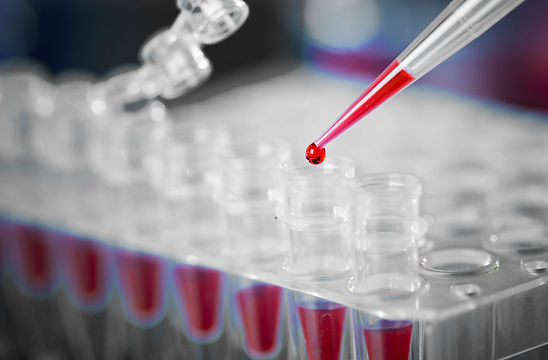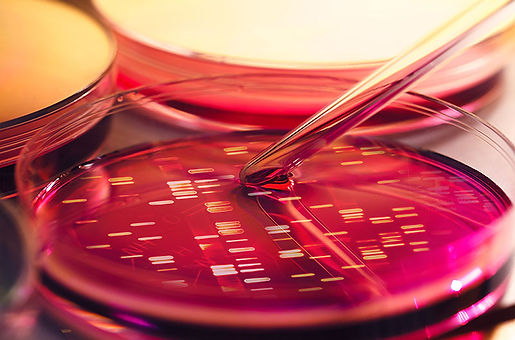
Fluorescence Spectroscopy
Our fluorescence work is based on a modular all fiber fluorescence spectroscopy system (called the optrode) we have developed. The optrode is now a very versatile tool and it has been applied to the measurement of the heart action potential in vivo, to bioremediation monitoring, and to water safety testing using fluorescence. We have specialised in fluorescence quantification and lately, we have focused on assessing microbiological safety of turbid media.
Research includes:
-
Bacteria enumeration and differentiation
-
Bacteria viability and antibiotic efficiency monitoring
-
Design of microfluidics systems to manipulate bacteria
-
Development and testing of new dyes to monitor specific bacterial processes
-
Developing the technology for monitoring food safety in near real time funded by an MBIE grant.
For more information on current projects please visit the links

Optrode work on live/dead bacteria
This project focuses on developing quantitative methods for monitoring bacteria using an all-fibre spectroscopic system called the optrode.
Bacterial samples are stained with two fluorescent dyes that differentially stain live and dead bacteria. The emitted fluorescent signals are quantified by the optrode and analysed, to obtain information on the concentration of live and dead bacteria present and gain insight to aspects of their physiological state.

Fang (Rachel) Ou
Phd in Physics (2019)
Absolute count using flow cytometry
Flow cytometry (FCM) is a quick and reliable way to identify cell characteristics based on the optical detection of scattered light and fluorescence. It is routinely used in the diagnosis of health disorders, especially blood cancers.
However it is not straightforward to obtain information about sample volume and concentration from most FCM. The most reliable and inexpensive way to establish sample volume is by using reference beads.
We have developed a method of using FCM with reference beads to measure live and dead mixtures of gram negative Escherichia coli. Current work is being done on the application of this technique for the analysis of gram positive Staphylococcus aureus.


Joni White




To understand where our optrode spectroscopic system will fit in the current meat processing industry quality control system, the group investigated the limitations of sampling meat with the industrial standard techniques.
Various meat surfaces were spiked with a known concentration of a marker organism and the bacterial recovery from cotton swabs were quantified to determine bacterial concentrations that would need to be present on a meat surface for the optrode to be capable of detecting bacterial contamination.
Understanding meat swabs
Novel fluorescent dyes for viability based on enzyme targets
Rapid quantification of bacterial viability will benefit food safety and healthcare. Fluorescence spectroscopy is a promising method limited only by the sensitivity and specificity of existing dyes. We are using bioinformatics to identify enzymes that differentiate live and dead bacteria, and we will use this information in the development of novel fluorescent dyes and spectroscopic methods with low limits of detection. Preliminary analyses have shown an overlap in both gene expression and proteins in bacteria stressed by heat shock and a DNA disrupting antibiotic. This gene and protein expression will be correlated to identify enzymes.
.jpg)
Craig Steed
PhD student in Physics
Bacterial differentiation using spectral signature
Using "the optrode", the group determined if bacteria have a species specific spectral signature when tagged with SYTO-9, which could be used to differentiate spoilage or pathogenic organisms in real-time.
A machine learning algorithm was used to train a program to identify five different bacterial species during three different phases of growth. The program was then tested with new spectral data to determine if the spectra were distinct enough to allow for an accurate prediction of bacterial species.
So far, promising results have been obtained with more than 90% specificty.


Claire Honney (PhD, 2019)
BSc in Biomedical Science, Masters Degree in Biomedical Science testing biocidal surfaces.
Testing new dyes for bacteria viability and differentiation
As SYTO9 and PI are not optional to differentiate bacteria and pick up bacteria death when the membrane compromises, we are testing new microbial fluorescent dyes (CTC, CFDA) for their use with the Optrode on anoxic solutions. Based on the full emission fluorescence spectrum, the dyes are examined for their ability to differentiate cell concentration, viability, and species. The project is dedicated to testing Optrode's potential for high sensitivity and specificity rapid microbial detection.

Jessica Chiang
MSc Student
Funding and collaborators



Publications
To evaluate a flow cytometry protocol that uses reference beads for the enumeration of live and dead bacteria present in a mixture.
Connect with us




Associate Professor Frederique Vanholsbeeck
Frederique Vanholsbeeck is the head of biophotonics research group at the University of Auckland. Please visit the link to contact Frederique.
Associate Professor Simon Swift
Simon Swift aims to use biophotonic approaches to quickly and cost effectively determine the microbial load and to identify the presence and type of problem pathogens. Technology developed will provide valuable real-time information that can impact upon the prevention of food spoilage and food-borne disease. Please visit the link to contact Simon.
Dr Cushla McGoverin
Cushla McGoverin's research focuses on understanding the fluorescence spectra obtained from stained bacteria for the purposes of enumerating live and dead bacteria, and identifying bacteria. Please visit the link to contact Cushla.
Dr Julia Robertson
Julia Robertson’s research applies the Optrode and the developed methodology to detecting antibiotic activity against Escherichia coli. The aim of the project is to develop a near real-time diagnostic device for use in hospitals to better inform treatment choice. Please visit the link to contact Julia.
Useful links


